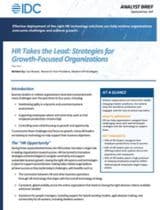Decoding the role of HR technology in midsize organisations
Midsize organisations often find themselves walking a tightrope between growth and stability. Over the past few years, they've encountered a myriad of challenges, from maintaining agility in uncertain environments to optimising costs while nurturing opportunities for expansion.
Zalaris

Amidst this situation, the role of Human Resources (HR) has undergone a profound transformation. HR leaders are increasingly turning to technology as a catalyst for navigating these challenges and fostering sustainable growth.
Now more than ever, HR technology has become the beacon guiding midsize organisations through the maze of modern business dynamics. But what exactly is HR technology? It’s more than just a suite of software solutions; it’s a strategic enabler that streamlines HR processes, fosters employee engagement, and drives organisational success.
What is HR technology?
HR technology encompasses a spectrum of digital tools and solutions designed to streamline and enhance various aspects of human resource management. From recruitment and onboarding to performance evaluation and payroll processing, HR technology revolutionises the way organisations interact with their workforce.
In this article, we delve into the pivotal role of HR technology in midsize organisations, exploring its challenges, benefits, and best practices for implementation.
Challenges faced by midsize companies in HR:
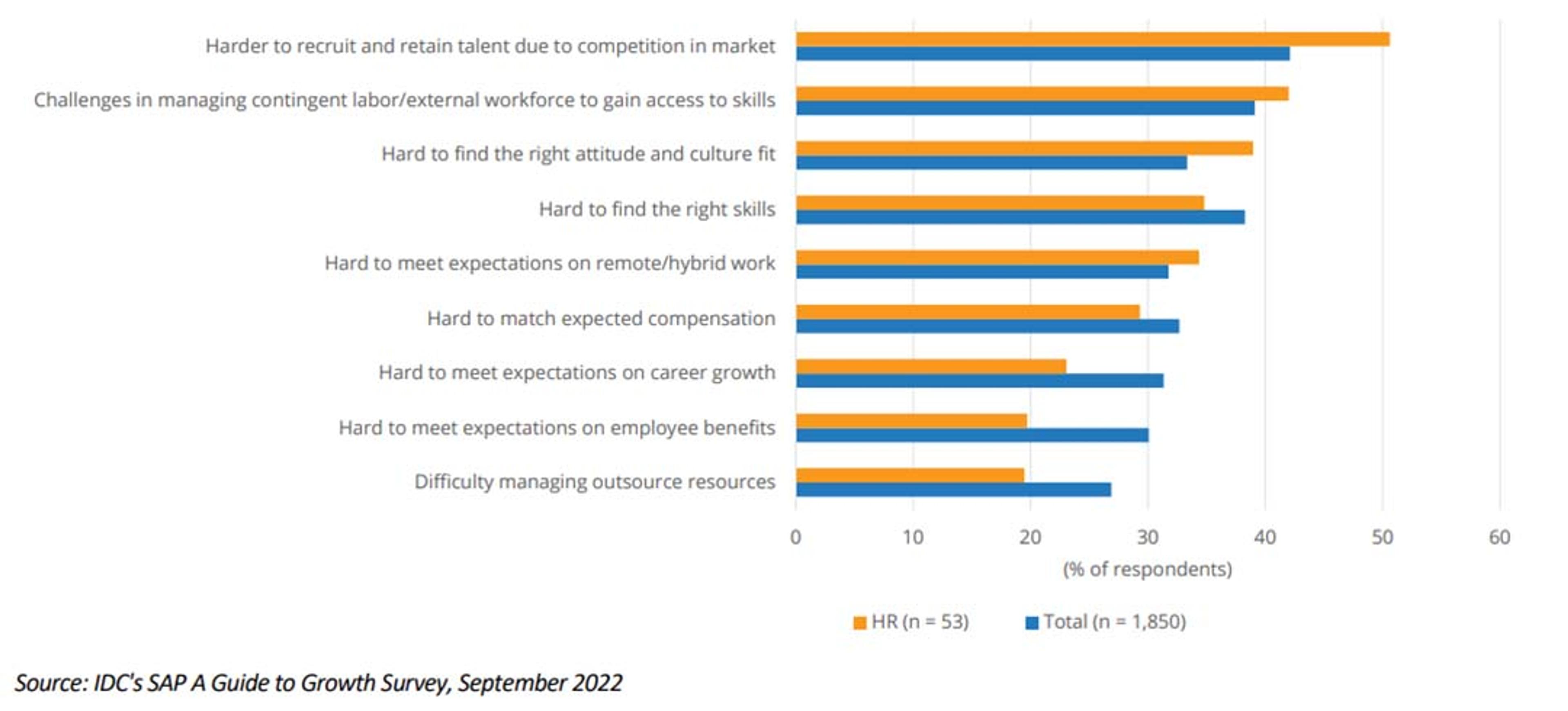
Figure 1: HR Challenge
From talent acquisition to retention, midsize companies grapple with many hurdles in human resources. Let’s delve into the 2 key challenges they face:
1. Recruiting and retaining high-potential employees:
In the current labour market, which has been the most competitive since the late 1990s, the challenge of finding and retaining skilled employees has reached unprecedented levels. This difficulty is exacerbated by a global shortage of skills, particularly in technical fields, further complicating the situation.
Recruitment teams are faced with the daunting task of attracting and hiring talent at significantly increased rates, all while grappling with limited staff resources themselves. Furthermore, today’s top talent seeks employers who align with their personal and professional values, including a commitment to diversity, equity, inclusion, and opportunities for career advancement. According to research conducted by InStride, over 75% of job seekers consider diversity and equity practices when assessing potential employers, and employees tend to remain with companies that prioritise internal promotion for almost twice as long.
Midsize companies find themselves particularly impacted in this situation. They face the same fierce competition for talent as larger organisations but often lack the resources and brand recognition to attract candidates as effectively. Moreover, midsize companies may struggle to offer the same level of perks and benefits as their larger counterparts, making it even more challenging to compete for top talent.
2. Managing a hybrid or remote workforce:
The transition to remote and flexible work locations presents fresh hurdles for HR professionals. Only 36% of employees report being engaged at work, while a significant majority (76%) express a preference for companies that actively listen to and address their concerns.
Maintaining employee engagement, productivity, and collaboration in a dispersed workforce, ensuring the health and safety of employees across various locations, and fostering a strong workplace culture are particularly challenging for midsize organisations. These challenges stem from several factors inherent to their size and structure. Firstly, midsize companies often operate with limited resources compared to large corporations, which can impede their ability to invest in robust remote work technologies and comprehensive employee support programmes.
Additionally, scalability becomes a concern, as existing systems and processes may not be designed to accommodate a distributed workforce efficiently. Communication barriers may further exacerbate the situation, hindering collaboration and alignment among teams spread across different locations.
Moreover, fostering a strong workplace culture becomes more challenging when employees are not physically present in the same location. Midsize organisations may struggle to maintain their unique culture and values across remote teams, leading to potential disengagement and morale issues.
However, traditional approaches to talent management often fall short in addressing these 2 major challenges, necessitating a paradigm shift towards innovative solutions.
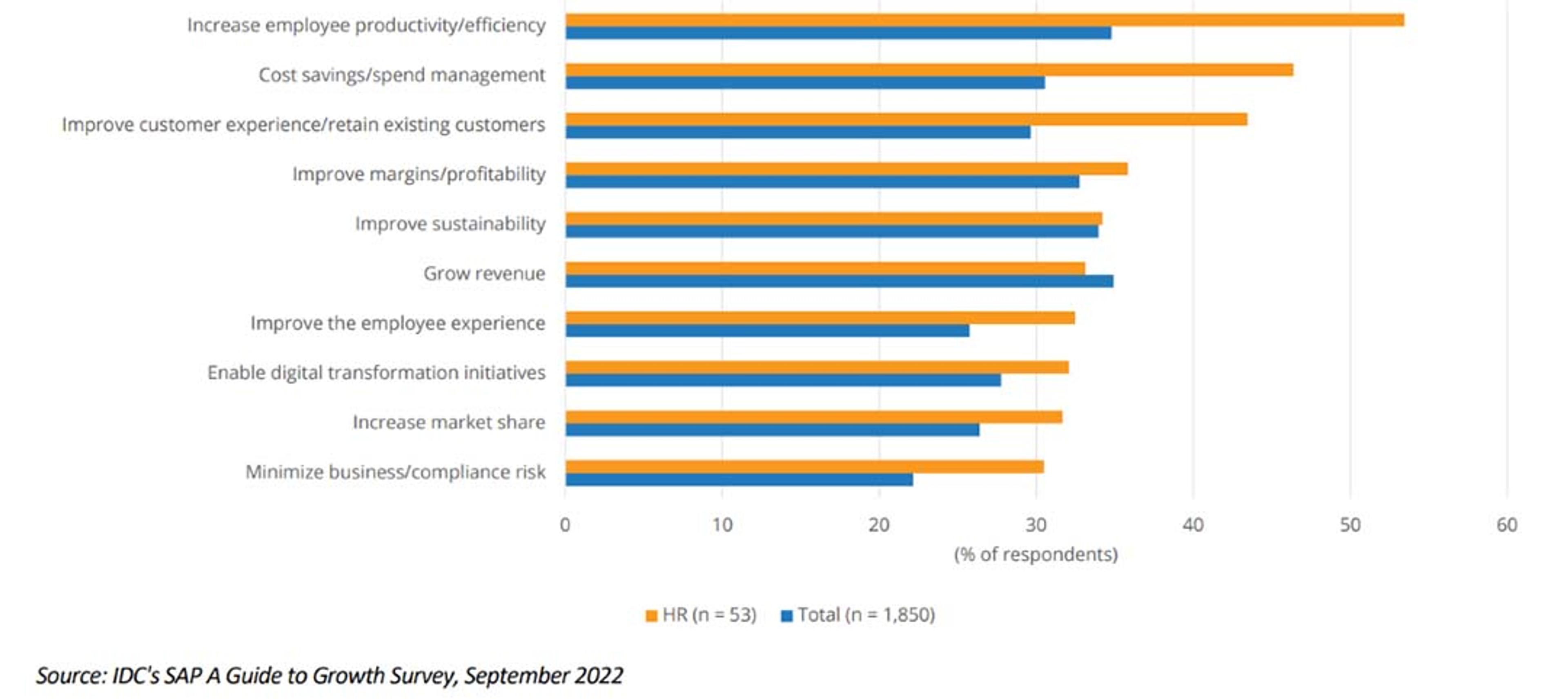
Figure 2: Top Business Objectives Driving Growth
The benefits of adopting HR technology in midsize organisations
According to a survey by CIPD, a significant majority (84.5%) of UK-based HR leaders affirm the integration of HR information systems (HRIS), while an equally robust 82.9% confirm the utilisation of payroll software.
The adoption of HR technology heralds a myriad of benefits for midsize organisations, presenting a transformative shift from enhanced efficiency to elevated employee satisfaction. By capitalising on automated payroll systems and centralised HR platforms, companies embark on a journey to streamline operations, mitigate errors, and alleviate administrative burdens. This not only liberates valuable time and resources but also ensures meticulous compliance with regulatory requirements.
Equipping midsize organisations with the appropriate HR systems and technologies is pivotal in facilitating sound decision-making, enabling them to navigate today’s challenges and attain success. The major benefits of such implementation include:
Facilitating seamless integration: HR technology serves as the linchpin connecting HR seamlessly with other critical business operations, aligning seamlessly with the overarching technology strategy.
Ensuring global visibility: The adoption of HR technology ensures consistent and global visibility across the entire organisational landscape. This fosters the availability of the right decision criteria precisely when needed, empowering leaders to make informed choices.
Empowering people managers: HR technology provides invaluable assistance to people managers by offering robust support for hybrid working models, fostering agile decision-making, and ensuring connectivity for all workers, including those in deskless roles.
Digitally transforming employee life cycle: Embracing up-to-date and digitally transformed processes throughout the employee life cycle stands as a testament to the efficiency-enhancing capabilities of HR technology for the entire workforce.
Streamlining payroll processes: HR technology contributes to timely and accurate payroll processes, complemented by well-integrated time and attendance capabilities. This integration plays a pivotal role in reducing and eliminating costly payroll reruns, ensuring financial precision.
Nurturing comprehensive skills development: An integral facet of HR technology lies in its ability to nurture comprehensive skills development. This empowerment equips organisations to build a robust bench strength, preparing them to meet future objectives with confidence.
Facilitating optimal employee role alignment: HR technology introduces a seamless process for aligning employees with the right growth opportunities and job roles within the organisation. This strategic matching ensures not only individual success but also contributes to overall organisational advancement.
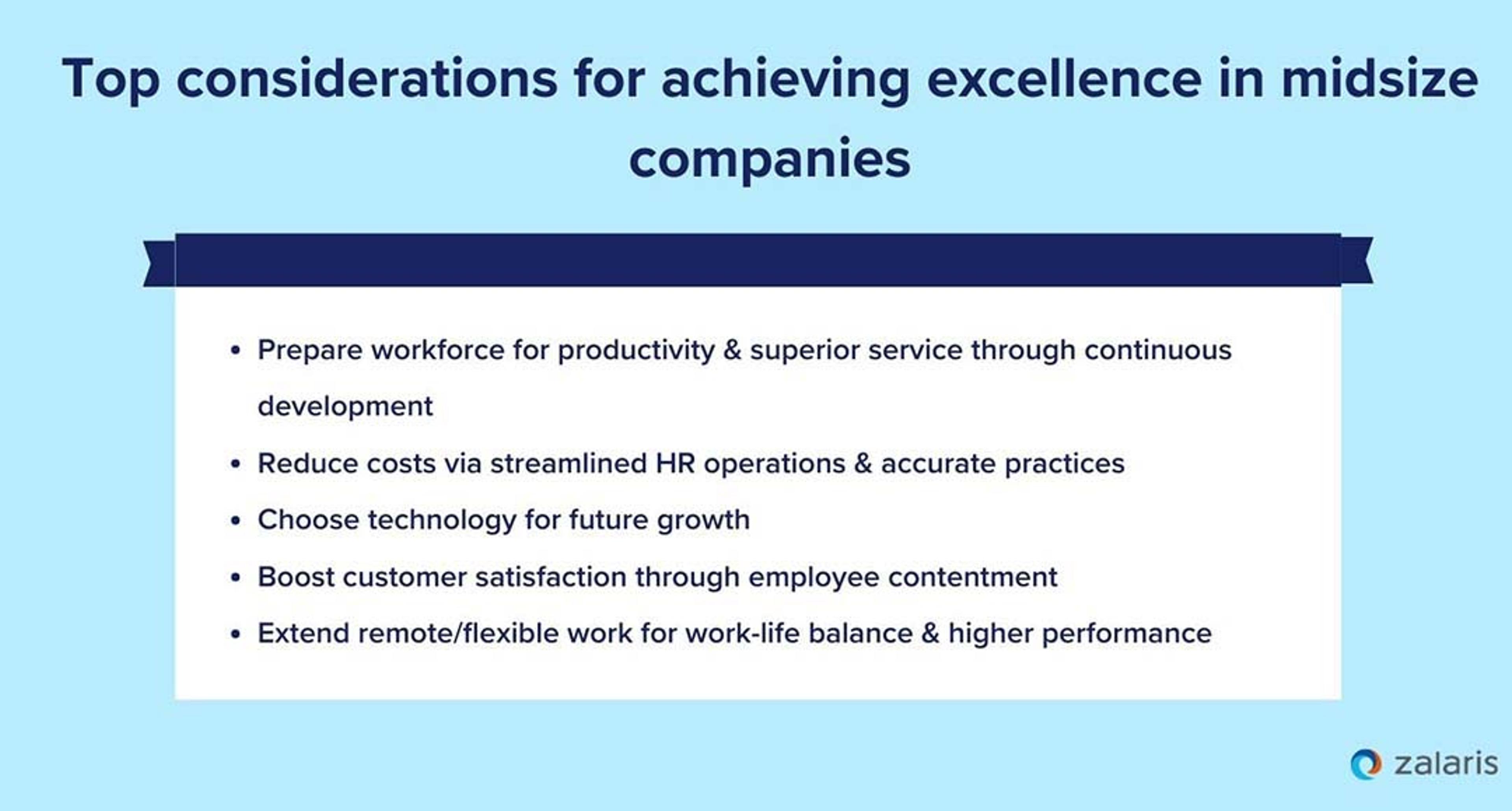
The best practices for implementing HR technology in midsize organisations
Implementing HR technology effectively requires a strategic approach tailored to the unique needs of each organisation. Here are some best practices to guide your midsize company on its journey towards digital transformation:
- Assess your needs: Conduct a thorough assessment of your current HR processes and identify areas for improvement. Determine your organisation’s priorities, budget constraints, and long-term goals to inform your technology selection process.
- Choose the right solution: Selecting the appropriate HR technology solution is crucial for success. Consider factors such as scalability, integration capabilities, and user-friendliness when evaluating vendors. Look for solutions that align with your organisation’s values and objectives
- Integration and implementation: Seamless integration with existing systems is essential for maximising the value of HR Technology. Collaborate closely with your IT department to ensure a smooth implementation process, providing adequate training and support to employees.
- Empower your employees: Encourage employee engagement and adoption of HR technology by fostering a culture of transparency and communication. Solicit feedback from end-users and incorporate their input into system enhancements to drive continuous improvement.
- Measure and optimise: Establish key performance indicators (KPIs) to track the impact of HR technology on your organisation. Monitor metrics such as employee satisfaction, retention rates, and productivity levels to gauge the effectiveness of your initiatives. Continuously refine your strategies based on data-driven insights to drive sustainable growth.
Make the move: Empower your midsize organisation
By embracing modern solutions and best practices, midsize companies can overcome operational challenges, nurture talent, and drive sustainable growth. The role of HR technology will continue to evolve, empowering organisations to thrive.
Unlock the full potential of HR technology and propel your midsize organisation towards success. IDC Analysts’ latest report by Research Vice President, Lisa Rowan will show you how the right HR technology solutions can help you overcome the challenges that midsize organisations face in the current market.
From concrete examples of HR technology solutions that are tailor-made for midsize organisations to how one can benefit from them, this report unveils a treasure trove of insights that you shouldn’t miss.
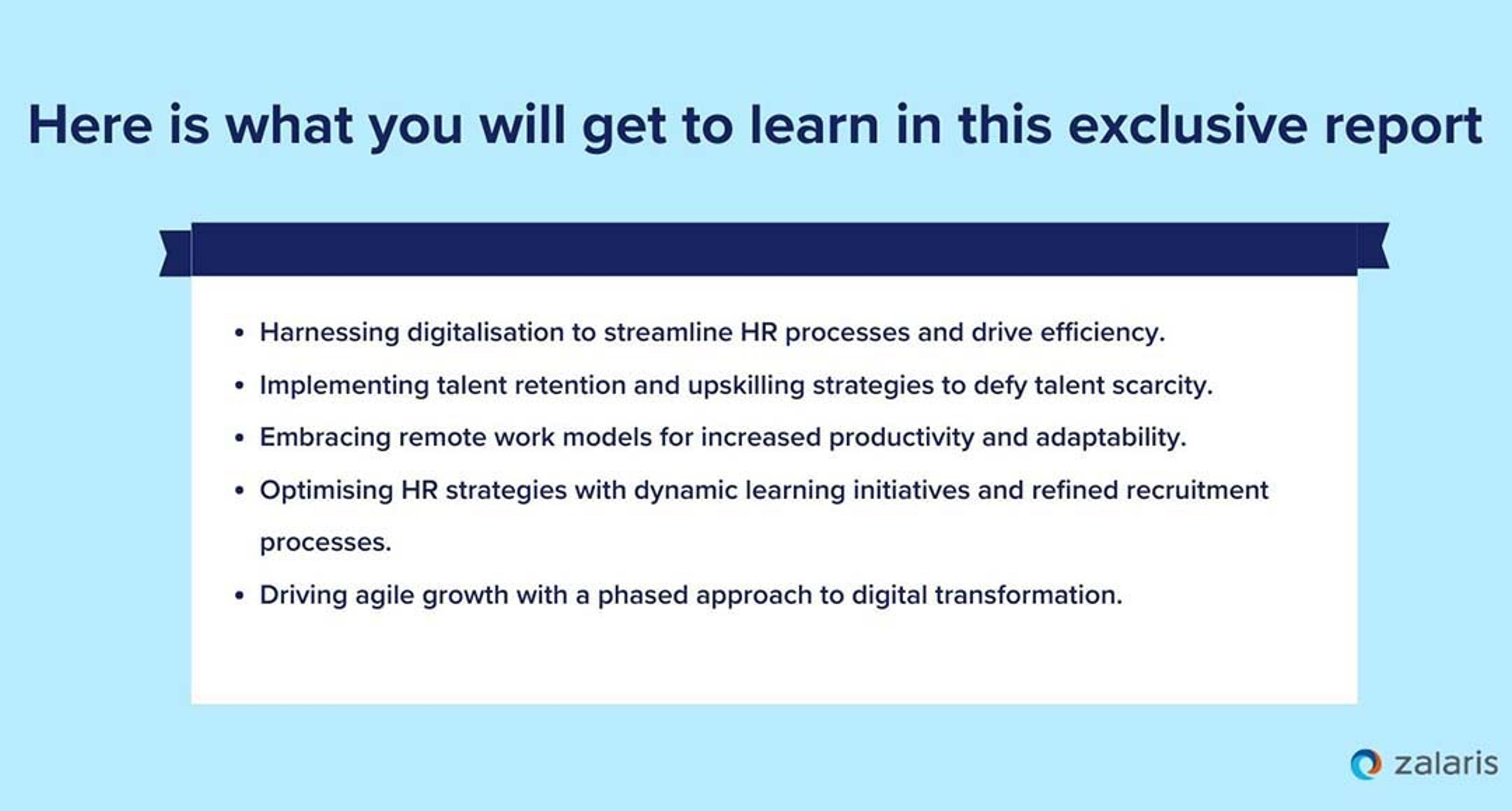
Gain actionable strategies, cutting-edge practices, and expert guidance to navigate talent challenges, seize digital opportunities, and propel your midsize organisation to new heights of success.
Download the full report now and embark on a journey toward mastery in HR and sustainable growth.
Download report
Enter your details below to get instant access to exclusive resources.
